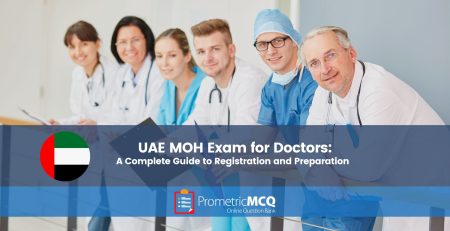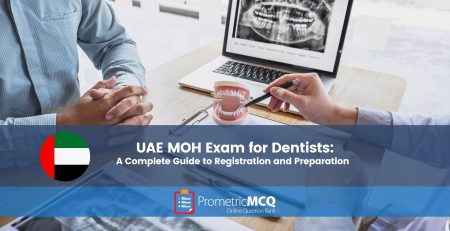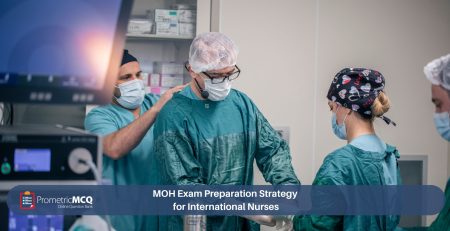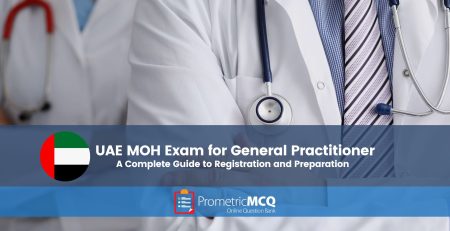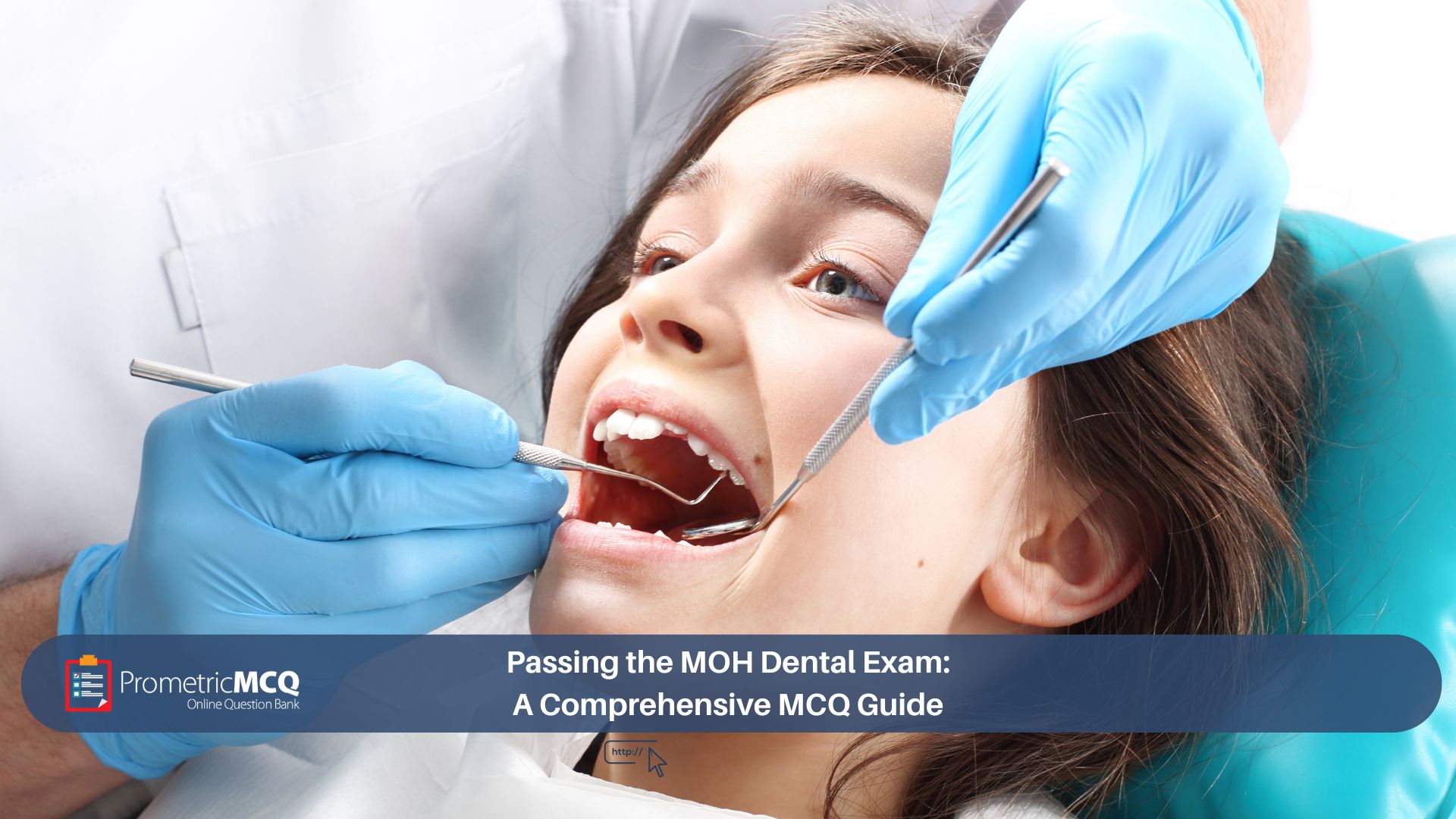
Passing the MOH Dental Exam: A Comprehensive MCQ Guide
fatima@prometricmcq.com2025-09-24T16:50:14+00:00Table of Contents
TogglePassing the MOH Dental Exam: A Comprehensive MCQ Guide
The United Arab Emirates stands as a beacon for dental professionals seeking a dynamic and technologically advanced environment to advance their careers. To practice in the emirates governed by the Ministry of Health and Prevention (MOHAP)—including Sharjah and Ras Al Khaimah—every dentist must first clear the MOH Dental Exam. This examination is a critical checkpoint, designed to validate a candidate’s clinical competency, diagnostic acumen, and adherence to international standards of care. It is a test not of rote memorization, but of applied clinical judgment.
The key to conquering this exam lies in a single, powerful strategy: mastering the art of the Multiple-Choice Question (MCQ). The MOH exam is entirely MCQ-based, and your ability to dissect clinical scenarios, eliminate distractors, and confidently select the best answer under pressure will define your success. This guide is built to be your ultimate companion in this endeavor. We will provide a deep dive into the exam’s structure, a strategic analysis of high-yield topics, and a series of realistic sample MCQs with exhaustive rationales. This is your comprehensive roadmap to understanding the UAE MOH exam for dentists and achieving a passing score.
Key Takeaways for MOH Dental Exam Success
- Diagnosis Above All: The ability to accurately diagnose conditions from clinical and radiographic information is the single most tested skill.
- Treatment Planning is Crucial: You must be able to formulate sound, evidence-based treatment plans for a variety of common and complex dental cases.
- Master Radiographic Interpretation: Proficiency in reading periapical radiographs, bitewings, and OPGs is essential. You must identify anatomy, caries, and pathology.
- Know Your Materials: Expect detailed questions on the properties, indications, and clinical handling of dental materials (composites, cements, impression materials).
- Medical Emergencies are a Priority: Be prepared to manage common medical emergencies in the dental chair, from syncope to anaphylaxis.
Deconstructing the 2025 MOH Dental Exam Blueprint
A successful preparation strategy begins with a thorough understanding of the exam’s content and structure. The MOH exam for General Dentists is a Computer-Based Test (CBT) featuring 100-150 MCQs to be completed within a 2-3 hour window. Every question is designed to simulate a real-world clinical challenge, demanding a practical application of your knowledge. A full understanding of the MOH examination guide is the first step.
Core Content Domains: A Deep Dive
The exam is a comprehensive assessment of a general dentist’s capabilities. A balanced and effective study plan must give due diligence to each of these fundamental areas of dentistry.
| Domain | High-Yield Topics and Concepts |
|---|---|
| Operative & Restorative Dentistry | Deep knowledge of caries diagnosis (visual, tactile, radiographic, ICDAS). G.V. Black’s classifications and principles of tooth preparation for various materials. Comprehensive understanding of dental materials: amalgam, resin composites (chemistry, generations of bonding agents), glass ionomer cements, and dental ceramics. Management of non-carious lesions and tooth sensitivity. |
| Endodontics | Accurate diagnosis of pulpal and periapical pathologies is critical. Root canal treatment procedures: access cavity design for all teeth, cleaning and shaping principles, irrigation solutions, and obturation techniques. Management of traumatic injuries (fractures, luxation, avulsion) and endodontic emergencies. |
| Prosthodontics (Fixed & Removable) | Principles of tooth preparation for full and partial coverage crowns. Impression materials and techniques. Complete and removable partial denture design, components, and management of common problems. Basics of implant prosthodontics, including abutment selection and restoration. For more specialized questions, you can refer to our MOH Prosthodontics Exam MCQs. |
| Oral Surgery & Anesthesia | Routine and surgical extractions, including principles of flap design and suturing. Management of impacted third molars. Local anesthesia: pharmacology of agents and vasoconstrictors, injection techniques (IANB, Gow-Gates), and management of complications (e.g., nerve injury, hematoma). Biopsy techniques. |
| Periodontics | Diagnosis and the latest classification of periodontal and peri-implant diseases. Non-surgical therapy (scaling and root planing). Surgical principles (gingivectomy, flap procedures, bone grafting). The strong link between periodontal disease and systemic conditions (e.g., diabetes, cardiovascular disease) is a high-yield topic. |
| Pediatric Dentistry & Orthodontics | Caries management in primary teeth, pulp therapy (pulpotomy vs. pulpectomy), stainless steel crowns, and space maintainers. Angle’s classification of malocclusion, cephalometric basics, and identification of common orthodontic problems requiring referral. |
| Oral Pathology, Medicine & Radiology | Radiographic interpretation is a major component. You must identify normal anatomy, caries, periapical lesions, cysts, and tumors on PAs, bitewings, and OPGs. Diagnosis and management of common oral mucosal lesions (aphthous ulcers, lichen planus, candidiasis). Oral manifestations of systemic diseases. |
Approach every MCQ as a consultation. Read the patient’s age, chief complaint, and medical history first. Formulate a differential diagnosis in your mind before you even read the options. This prevents you from being swayed by clever distractors.
Strategic MCQ Deconstruction: Sample Questions & In-Depth Rationales
The only way to master the exam is to practice. Let’s break down some realistic, case-based questions to understand the level of critical thinking required. For extensive practice, using a dedicated bank of dentistry MCQs is highly recommended.
Question 1: Oral Surgery / Anesthesia
A healthy 40-year-old patient requires extraction of a maxillary first molar. After administering a PSA nerve block, the patient almost immediately develops a large, rapidly swelling hematoma on the side of their face. What is the most likely cause?
- Injection into the parotid gland
- Puncture of the pterygoid venous plexus
- Allergic reaction to the anesthetic solution
- Injection into the maxillary artery
Correct Answer: B
Rationale: The posterior superior alveolar (PSA) nerve and vessels run in close proximity to the pterygoid venous plexus. A rapidly forming hematoma following a PSA injection is the classic sign of inadvertently puncturing this rich network of veins with the needle. The venous bleeding leads to rapid and diffuse swelling in the infratemporal fossa.
Why other options are incorrect:
A: The parotid gland is located more posteriorly and inferiorly and is not typically at risk during a standard PSA block.
C: An allergic reaction would present with systemic signs like urticaria, itching, or respiratory distress, not a localized hematoma.
D: Puncturing the maxillary artery is possible but less common than hitting the venous plexus. Arterial bleeding would be pulsatile and could lead to a more dangerous, rapidly expanding hematoma, but the venous plexus is the most common cause of this specific complication.
Question 2: Restorative Dentistry / Dental Materials
When placing a Class II composite restoration, a dentist uses a sectional matrix system. What is the primary advantage of a sectional matrix over a traditional Tofflemire matrix for this procedure?
- It is easier to place
- It provides a tighter gingival seal
- It helps achieve a more predictable and tight interproximal contact
- It requires less wedging
Correct Answer: C
Rationale: The primary purpose and proven advantage of a sectional matrix and ring system is its ability to re-establish a tight, anatomically correct interproximal contact. The pre-contoured sectional bands, combined with the separating pressure of the ring, effectively separate the teeth slightly during restoration. When the ring and matrix are removed, the teeth spring back together, creating a firm contact that is very difficult to achieve with a circumferential Tofflemire matrix, which tends to flatten the proximal surface.
Why other options are incorrect:
A: Placement can be more technique-sensitive than a Tofflemire, especially for beginners.
B: While a good seal is important and can be achieved, the primary advantage is not the seal itself but the contact point.
D: It still requires proper and firm wedging to seal the gingival margin and provide initial tooth separation.
Question 3: Endodontics / Diagnosis
A patient complains of a severe, lingering pain to cold stimuli on their mandibular second molar that lasts for several minutes. The pain is spontaneous and wakes them up at night. Percussion testing is negative. A periapical radiograph shows a deep amalgam restoration but no periapical radiolucency. What is the most likely pulpal diagnosis?
- Reversible Pulpitis
- Symptomatic Irreversible Pulpitis
- Pulp Necrosis
- Asymptomatic Apical Periodontitis
Correct Answer: B
Rationale: This is a classic presentation of symptomatic irreversible pulpitis. The key diagnostic features are intense, lingering pain to thermal stimuli (especially cold) and spontaneous pain (including nocturnal pain). The pulp is still vital but has been damaged beyond its capacity to heal. The absence of percussion sensitivity and radiographic changes is common because the inflammation has not yet extended significantly into the periapical tissues.
Why other options are incorrect:
A: Reversible pulpitis involves sharp pain to stimuli, but it subsides within seconds of the stimulus being removed. It is not spontaneous.
C: Pulp necrosis means the pulp is non-vital. The tooth would not respond to cold testing at all.
D: Asymptomatic apical periodontitis is a diagnosis for a necrotic pulp and is, by definition, asymptomatic with radiographic evidence of a periapical lesion.
Frequently Asked Questions (FAQs) for the MOH Dental Exam
The exam is graded on a Pass/Fail basis. MOHAP does not release an official passing percentage. However, based on extensive candidate feedback and expert analysis, the unofficial benchmark is considered to be around 60-65%. To ensure a comfortable pass, you should aim to consistently score over 70% in your practice tests.
The MOH General Dentist exam typically contains between 100 to 150 MCQs. The allotted time is usually between 2 to 3 hours. This requires you to manage your time effectively, spending approximately one minute per question.
All three exams are required for practicing in different parts of the UAE (MOH for Northern Emirates, DHA for Dubai, DOH for Abu Dhabi). While they all cover the same core dental competencies, there can be slight variations in the emphasis of certain topics and, most importantly, in specific local regulations that might be tested. The clinical standard is universally high across all three.
It is moderately important. While the exam will primarily use generic names (e.g., “resin-modified glass ionomer cement”), you may occasionally encounter questions that use a very common brand name as an example. It’s more critical to know the properties, indications, and contraindications of material *classes* than to memorize hundreds of brand names.
Active learning is key. Don’t just look at radiographs; interpret them systematically. Use a dedicated dental radiology atlas or online resource. For every radiograph, identify all anatomical landmarks first, then look for abnormalities like caries, bone loss, and periapical lesions. This structured approach will prevent you from missing key findings.
No, there is no penalty for guessing. Your final score is determined by the number of questions you answer correctly. It is crucial to answer every single question, even if you are unsure. Use the process of elimination to improve your odds.
Passing the exam makes you eligible for a license. You will receive an eligibility letter, after which you must complete the Primary Source Verification (PSV) process with the DataFlow Group. This involves verifying your qualifications. Once PSV is complete and you have a job offer, your employer will proceed with activating your UAE MOH license.
Candidates are typically allowed a total of three attempts to pass the MOH exam. Failing a third time may require you to undertake a period of additional clinical training before you are permitted to re-apply. It is highly advisable to prepare thoroughly to pass within the first two attempts.
The MOH exam reflects a high standard of global dental practice. Familiarity with clinical guidelines from internationally recognized organizations is highly beneficial. For instance, the recommendations on antibiotic prophylaxis from the American Heart Association (AHA) or clinical practice guidelines from the FDI World Dental Federation are excellent, authoritative resources to consult during your preparation.
The single most effective strategy is consistent practice with a large, high-quality question bank (QBank). Answering thousands of MCQs exposes you to the exam format, helps you identify your weak areas, reinforces your knowledge, and perfects your time management skills. Combining a QBank with a review of your core textbooks is the ultimate recipe for success.
Conclusion: Your Next Chapter in UAE Dentistry
The MOH Dental Exam is a formidable challenge, but it is a transparent and fair assessment of the skills required to be a successful dentist in the UAE. Your success is not a matter of chance but a direct outcome of dedicated, strategic preparation. By focusing your energy on an MCQ-based learning approach, mastering the high-yield clinical domains, and adhering to a structured study plan, you will build the knowledge and confidence needed to excel. Passing this exam is the definitive step toward launching a rewarding professional journey in one of the world’s most exciting healthcare markets.
Ready to Master the MCQs and Secure Your License?
Unlock your full potential with our premium question bank, featuring hundreds of MOH-style dental MCQs, detailed rationales, and simulated exams to guarantee you are fully prepared.

